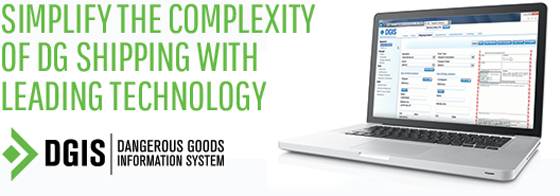

Week of March 11, 2019
Linking technology news with Dangerous Goods compliance
Technology innovation has crept into every part of our personal and professional lives. For companies shipping and handling dangerous goods (DG), these new technologies have a significant impact on the supply chains – including how they must approach compliance.
To help companies keep a pulse on technology trends impacting business and the movement of dangerous goods throughout the supply chain, Labelmaster has launched “Supply Chain Moves,” a weekly report linking the latest technology news to dangerous goods compliance.
Let’s examine the recent supply chain technology and industry news.
TECHNOLOGY
- 5 ERP Trends the C-suite Should Keep an Eye On: ERP has been around for decades, but technology development is not stagnant. Here are some of the biggest ERP trends taking shape in 2019.
- FedEx Introduces Same-Day Delivery Robot: FedEx unveiled an autonomous delivery device designed to help retailers make same-day and last-mile deliveries to customers.
- 5 IoT Lessons Taken From the Logistics Industry: Want proof that IoT addresses current business cases and generates new use cases? Just look at transportation companies.
- ProcessPro ERP Releases New Cultivation Management System: ProcessPro announced the release of its Cultivation Management System, an integrated plant management solution providing tracking capabilities for seed-to-sale and farm-to-fork growers and manufacturers.
3PL TECH
- Transplace Partners with Noodle.ai to Use Enterprise AI: Transplace has partnered with Noodle.ai to further integrate artificial intelligence and machine learning technologies into its operations.
- Supply Chain Challenges Demand Digital Solutions, HighJump Says: The pressures of providing logistics services in 2019 is driving increased investment in the digitization of the supply chain.
- XPO Logistics Launches XPO Connect in Europe: XPO Logistics announced the launch of XPO Connect, a cloud-based, digital freight marketplace, in Europe.
- The Logistics Management IT Solution WIMO raised $500M Funding: WIMO, a delivery platform that enables companies to automate their logistics operations, has landed $500,000 in Seed funding.
- 2019 Warehouse/DC Equipment Survey: Still Bullish, But More Measured: Spending on 3PL services and technologies are all part of finding the right mix of equipment, software and services to manage the stress of today’s labor market and order fulfillment pressures.
Technology & Dangerous Goods Compliance
FedEx recently unveiled an autonomous delivery device designed to help retailers make same-day and last-mile deliveries to customers. The robot even made an appearance on “The Tonight Show Starring Jimmy Fallon.”
Being developed by Dean Kamen, inventor of the Segway, the FedEx bot is designed to travel on sidewalks and along roadsides and deliver smaller shipments. FedEx revealed that it has been collaborating with companies such as AutoZone, Lowe’s, Pizza Hut, Target, Walgreens and Walmart to help assess retailers’ autonomous delivery needs.
According to FedEx, the bot features include “pedestrian-safe technology and advanced technology such as LiDAR and multiple cameras. The bot will be zero-emission and battery-powered. The bot will also have machine-learning algorithms to detect and avoid obstacles, plotting safe paths and allowing the bot to follow road and safety rules.”
Safety is always a concern when shipping goods, but there are more safety issues with delivery robots than simply obeying traffic laws and not running into pedestrians. There is a huge dangerous goods component that cannot be overlooked. For one: the battery used to power the device. Safety issues around lithium batteries have been splashed across the headlines in recent years and battery-operated robots making deliveries now adds another twist to the story.
But it’s not just the battery itself that is considered “hazardous.” Many of the items sold by companies FedEx has initially collaborated with – AutoZone, Lowe’s, Target, Walgreens and Walmart – are classified as “hazardous.” From perfume and nail polish to cleaning products and electronics – these products have specific regulations around how they must be packaged, labeled and shipped. And compliance with those rules are critical in order to have products delivered to customers on time.
FedEx stated that the prototype will be refined to meet safety standards and regulations, and the specific needs of customers. But how will compliance requirements change when having an autonomous robot, running on a lithium battery, carry around dangerous goods around city streets? Both FedEx, retailers, suppliers and government agencies will all need to be part of the solution to make sure goods are shipped safely and compliantly at every step of the supply chain – which will soon involve final delivery by a robot.
How will new delivery methods impact your supply chain?

Labelmaster’s Dangerous Goods Information System (DGIS) is the leading SaaS solution to help companies more efficiently and accurately manage their Dangerous Goods shipments. DGIS validates your Dangerous Goods shipment data against the latest regulations, ensuring a more efficient supply chain and reducing friction found in Dangerous Goods shipments. DGIS is a certified partner/validation solution with ERP, transportation and warehouse management systems.

